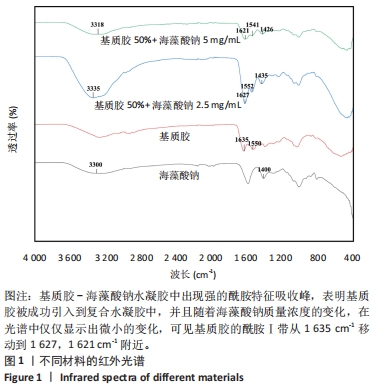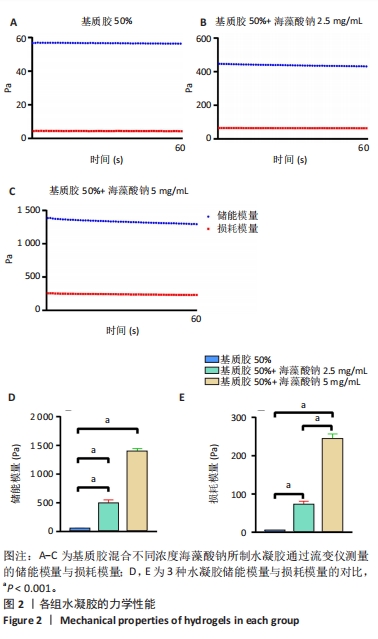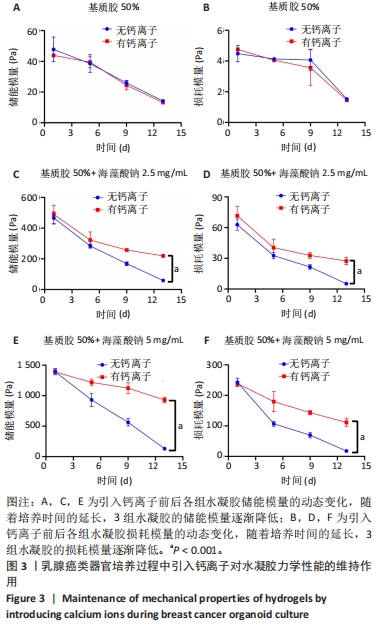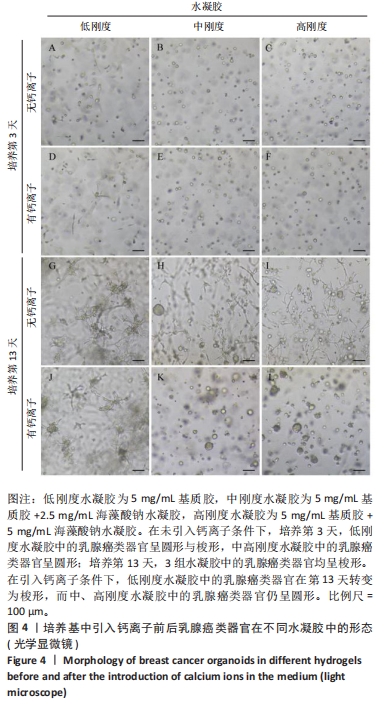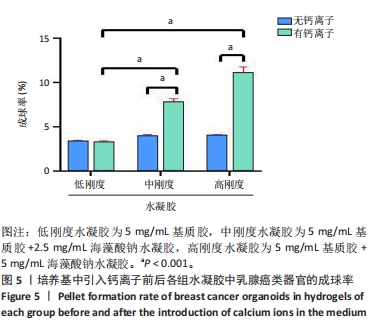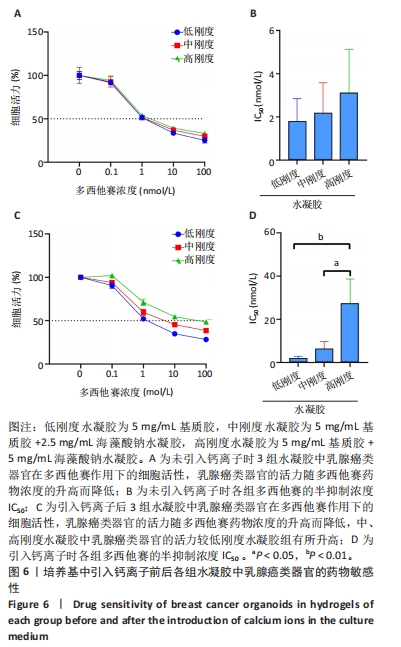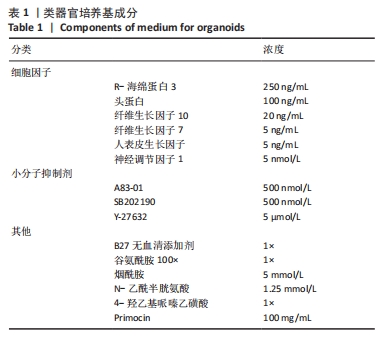[1] SIEGEL R, MILLER K, WAGLE N, et al. Cancer statistics, 2023. CA Cancer J Clin. 2023;73(1):17-48.
[2] PLODINEC M, LOPARIC M, MONNIER C, et al. The nanomechanical signature of breast cancer. Nat Nanotechnol. 2012;7(11):757-765.
[3] PICKUP M, MOUW J, WEAVER V. The extracellular matrix modulates the hallmarks of cancer. EMBO Rep. 2014;15(12):1243-1253.
[4] LIU C, LI M, DONG Z, et al. Heterogeneous microenvironmental stiffness regulates pro-metastatic functions of breast cancer cells. Acta Biomater. 2021;131:326-340.
[5] YUAN Z, LI Y, ZHANG S, et al. Extracellular matrix remodeling in tumor progression and immune escape: from mechanisms to treatments. Mol Cancer. 2023;22(1):48.
[6] SAXENA N, CHAKRABORTY S, DUTTA S, et al. Stiffness-dependent MSC homing and differentiation into CAFs - implications for breast cancer invasion. J Cell Sci. 2024;137(1):jcs261145.
[7] CHAUDHURI O, KOSHY S, BRANCO DA CUNHA C, et al. Extracellular matrix stiffness and composition jointly regulate the induction of malignant phenotypes in mammary epithelium. Nat Mater. 2014; 13(10):970-978.
[8] LEVENTAL K, YU H, KASS L, et al. Matrix crosslinking forces tumor progression by enhancing integrin signaling. Cell. 2009;139(5):891-906.
[9] MALIK R, LELKES P, CUKIERMAN E. Biomechanical and biochemical remodeling of stromal extracellular matrix in cancer. Trends Biotechnol. 2015;33(4):230-236.
[10] HUIJBERS I, IRAVANI M, POPOV S, et al. A role for fibrillar collagen deposition and the collagen internalization receptor endo180 in glioma invasion. PLoS One. 2010;5(3):e9808.
[11] BONNANS C, CHOU J, WERB Z. Remodelling the extracellular matrix in development and disease. Nat Rev Mol Cell Biol. 2014;15(12):786-801.
[12] COX T, BIRD D, BAKER A, et al. LOX-mediated collagen crosslinking is responsible for fibrosis-enhanced metastasis. Cancer Res. 2013;73(6): 1721-1732.
[13] PARK J, KIM J, YANG G, et al. Lysyl oxidase-responsive anchoring nanoparticles for modulation of the tumor immune microenvironment. J Control Release. 2023;360:376-391.
[14] NILAND S, RISCANEVO A, EBLE J. Matrix Metalloproteinases Shape the Tumor Microenvironment in Cancer Progression. Int J Mol Sci. 2021;23(1):146.
[15] QUAIL D, JOYCE J. Microenvironmental regulation of tumor progression and metastasis. Nat Med. 2013;19(11):1423-1437.
[16] LU Y, CHU T, HALL M, et al. Physical confinement induces malignant transformation in mammary epithelial cells. Biomaterials. 2019;217: 119307.
[17] YU T, ZHANG G, CHAI X, et al. Recent progress on the effect of extracellular matrix on occurrence and progression of breast cancer. Life Sci. 2023;332:122084.
[18] GE H, TIAN M, PEI Q, et al. Extracellular Matrix Stiffness: New Areas Affecting Cell Metabolism. Front Oncol. 2021;11:631991.
[19] KIM M, EUN N, AHN S, et al. Elasticity Values as a Predictive Modality for Response to Neoadjuvant Chemotherapy in Breast Cancer. Cancers (Basel). 2024;16(2):377.
[20] MATOSSIAN M, CHANG T, WRIGHT M, et al. In-depth characterization of a new patient-derived xenograft model for metaplastic breast carcinoma to identify viable biologic targets and patterns of matrix evolution within rare tumor types. Clin Transl Oncol. 2022;24(1):127-144.
[21] JABBARI E, SARVESTANI S, DANESHIAN L, et al. Optimum 3D Matrix Stiffness for Maintenance of Cancer Stem Cells Is Dependent on Tissue Origin of Cancer Cells. PLoS One. 2015;10(7):e0132377.
[22] XU H, JIAO D, LIU A, et al. Tumor organoids: applications in cancer modeling and potentials in precision medicine. J Hematol Oncol. 2022; 15(1):58.
[23] CHRISNANDY A, BLONDEL D, REZAKHANI S, et al. Synthetic dynamic hydrogels promote degradation-independent in vitro organogenesis. Nat Mater. 2022;21(4):479-487.
[24] NATHALIE B, FARZANEH F, LUKE H, et al. GelMA, Click-Chemistry Gelatin and Bioprinted Polyethylene Glycol-Based Hydrogels as 3D Ex Vivo Drug Testing Platforms for Patient-Derived Breast Cancer Organoids. Pharmaceutics. 2023;15:261.
[25] MELIS I, BABATUNDE OO, CEMIL CAN E, et al. Bioactive and chemically defined hydrogels with tunable stiffness guide cerebral organoid formation and modulate multi-omics plasticity in cerebral organoids. Acta Biomater. 2023;171:223-238.
[26] DONGZHI W, YIBING G, JIACHENG Z, et al. Hyaluronic acid methacrylate/pancreatic extracellular matrix as a potential 3D printing bioink for constructing islet organoids. Acta Biomater. 2022;165:86-101.
[27] ZI-YAN X, JIN-JIAN H, YE L, et al. Extracellular matrix bioink boosts stemness and facilitates transplantation of intestinal organoids as a biosafe Matrigel alternative. Bioeng Transl Med. 2023;8:e10327.
[28] AN Q, REN J, JIA X, et al. Anisotropic materials based on carbohydrate polymers: A review of fabrication strategies, properties, and applications. Carbohydr Polym. 2024;330:121801.
[29] LEE K, MOONEY D. Alginate: properties and biomedical applications. Prog Polym Sci. 2012;37(1):106-126.
[30] CASSEL DE CAMPS C, ASLANI S, STYLIANESIS N, et al. Hydrogel Mechanics Influence the Growth and Development of Embedded Brain Organoids. ACS Appl Bio Mater. 2022;5(1):214-224.
[31] LI Y, KHUU N, PRINCE E, et al. Matrix Stiffness-Regulated Growth of Breast Tumor Spheroids and Their Response to Chemotherapy. Biomacromolecules. 2021;22(2):419-429.
[32] KACZMAREK B, SIONKOWSKA A, STOJKOVSKA J. Characterization of scaffolds based on chitosan and collagen with glycosaminoglycans and sodium alginate addition. Polym Test. 2018;68:229-232.
[33] TIAN H, CHEN Y, DING C, et al. Interaction study in homogeneous collagen/chondroitin sulfate blends by two-dimensional infrared spectroscopy. Carbohydr Polym. 2012;89(2):542-550.
[34] TZENG YT, HSIAO JH, TSENG LM, et al. Breast cancer organoids derived from patients: A platform for tailored drug screening. Biochem Pharmacol. 2023;217:115803.
[35] LIU X, YE Y, ZHU L, et al. Niche stiffness sustains cancer stemness via TAZ and NANOG phase separation. Nat Commun. 2023;14(1):238.
[36] YANG X, SARVESTANI S, MOEINZADEH S, et al. Three-dimensional-engineered matrix to study cancer stem cells and tumorsphere formation: effect of matrix modulus. Tissue Eng Part A. 2013;19:669-684.
[37] THONGROM B, TANG P, ARORA S, et al. Polyglycerol-Based Hydrogel as Versatile Support Matrix for 3D Multicellular Tumor Spheroid Formation. Gels. 2023;9(12):938.
[38] LEE D, CHA C. Cell subtype-dependent formation of breast tumor spheroids and their variable responses to chemotherapeutics within microfluidics-generated 3D microgels with tunable mechanics. Mater Sci Eng C Mater Biol Appl. 2020;112:110932.
[39] SO J, OHM J, LIPKOWITZ S, et al. Triple negative breast cancer (TNBC): Non-genetic tumor heterogeneity and immune microenvironment: Emerging treatment options. Pharmacol Ther. 2022;237:108253.
[40] ORT C, CHEN Y, GHAGRE A, et al. Bioprintable, Stiffness-Tunable Collagen-Alginate Microgels for Increased Throughput 3D Cell Culture Studies. ACS Biomater Sci Eng. 2021;7(6):2814-2822.
[41] JANG M, KOH I, LEE J, et al. Increased extracellular matrix density disrupts E-cadherin/β-catenin complex in gastric cancer cells. Biomater Sci. 2018;6(10):2704-2713.
|

